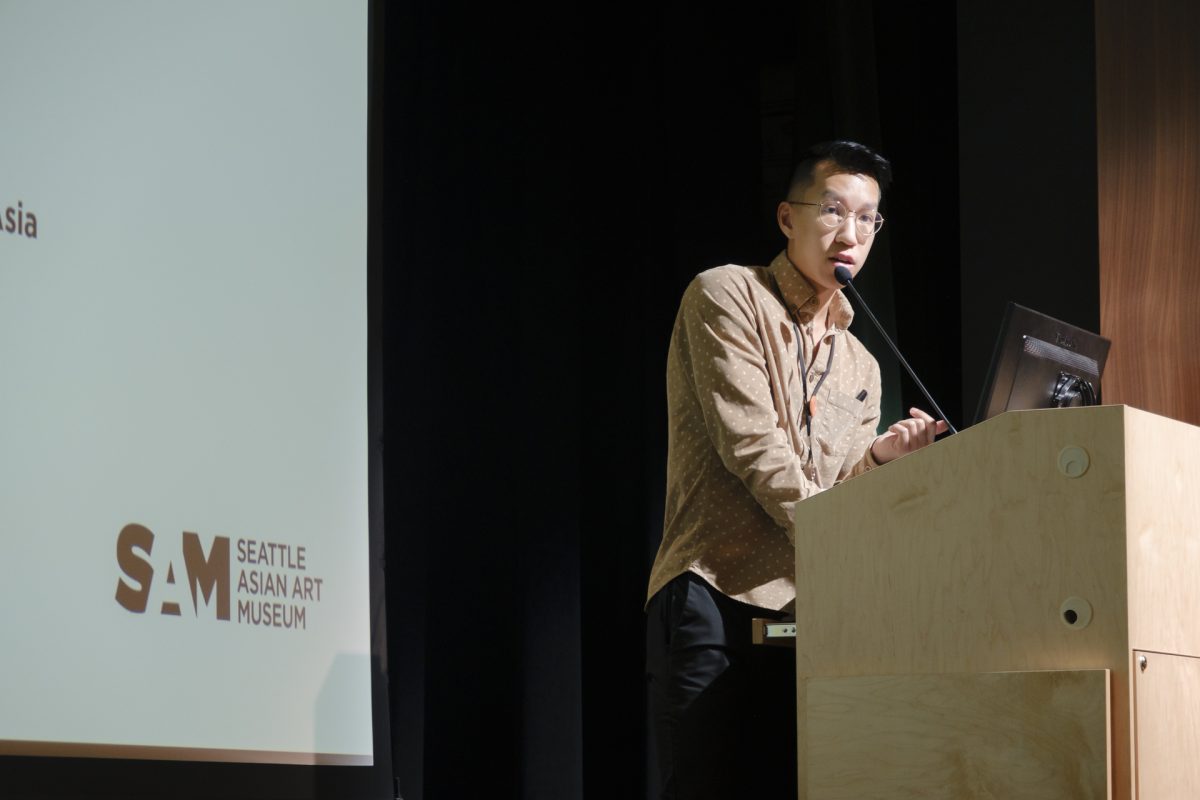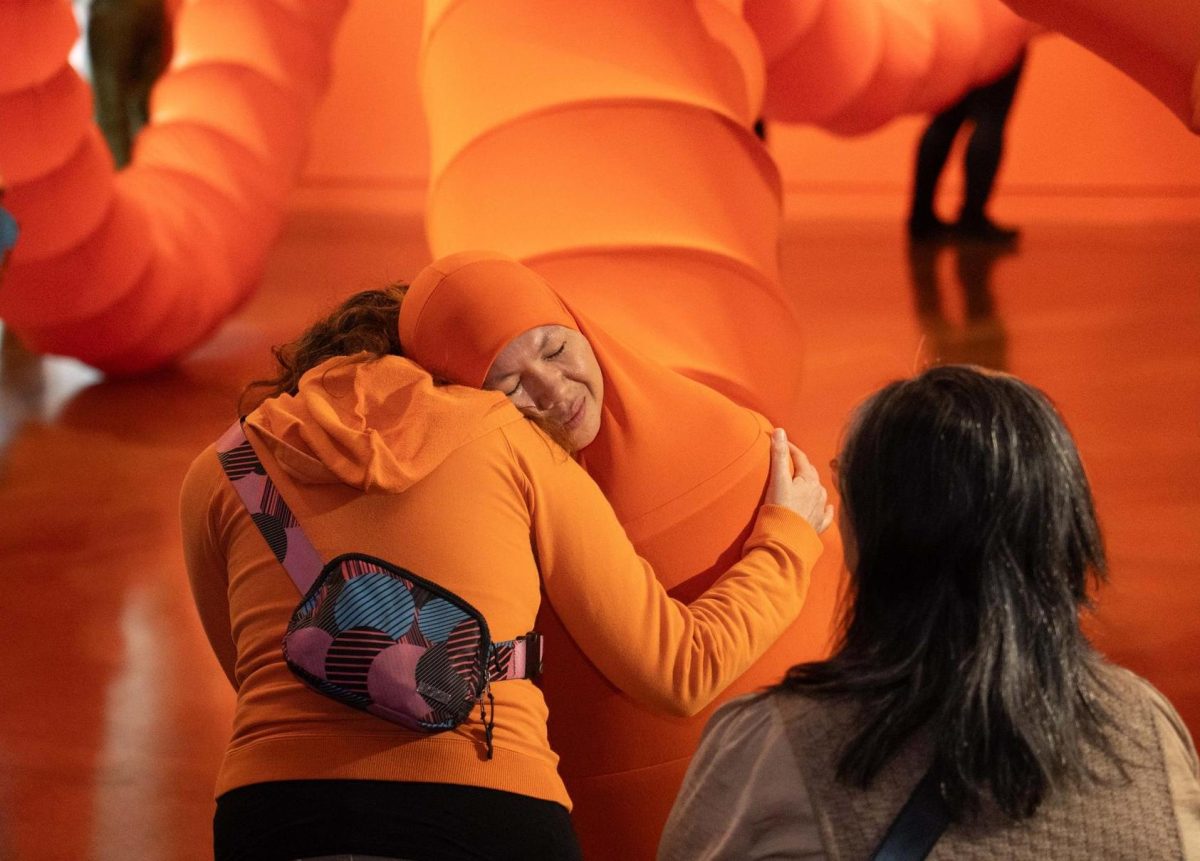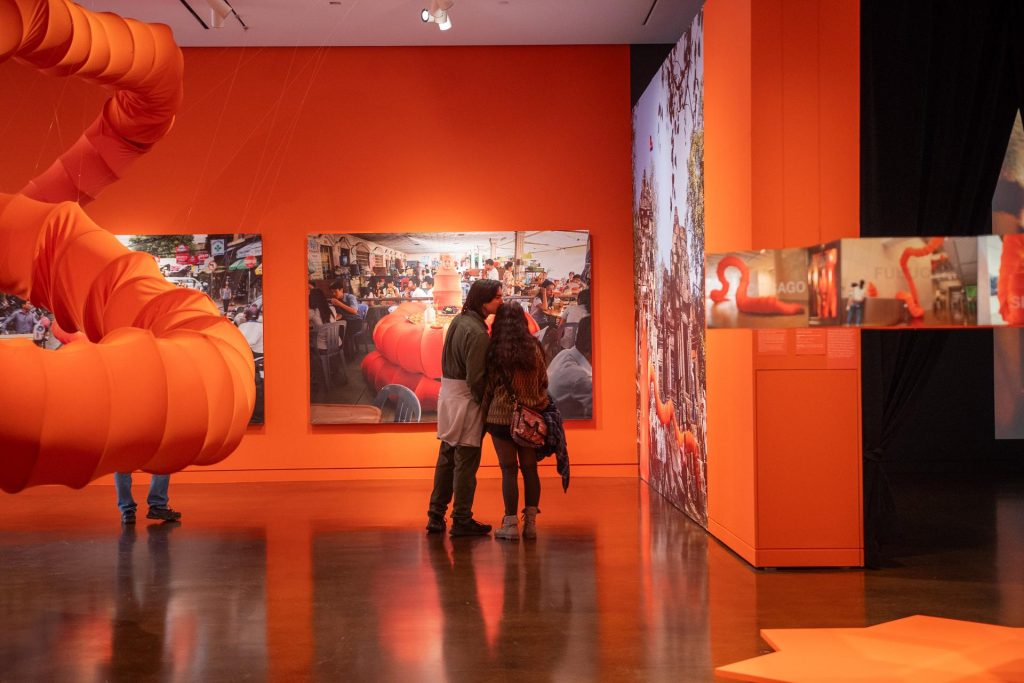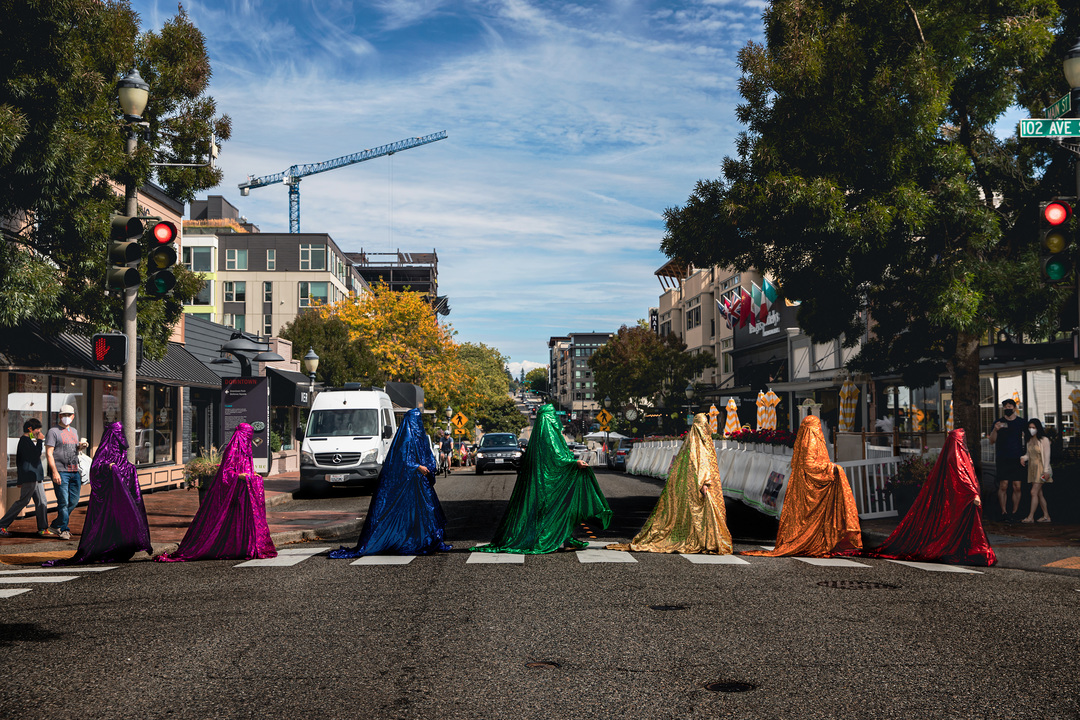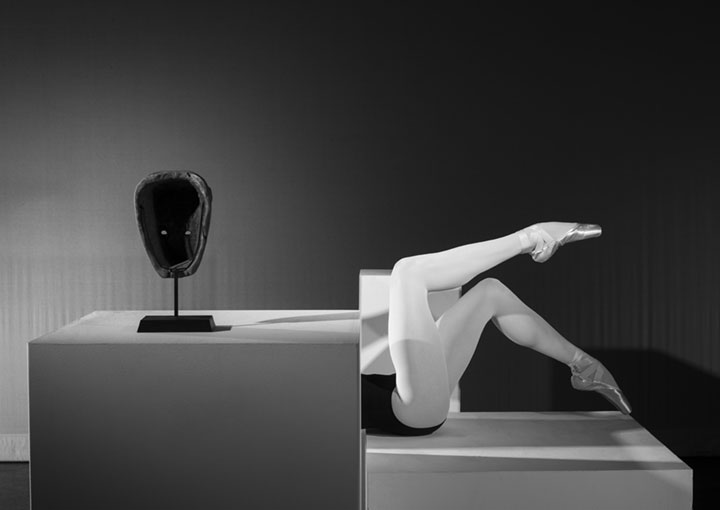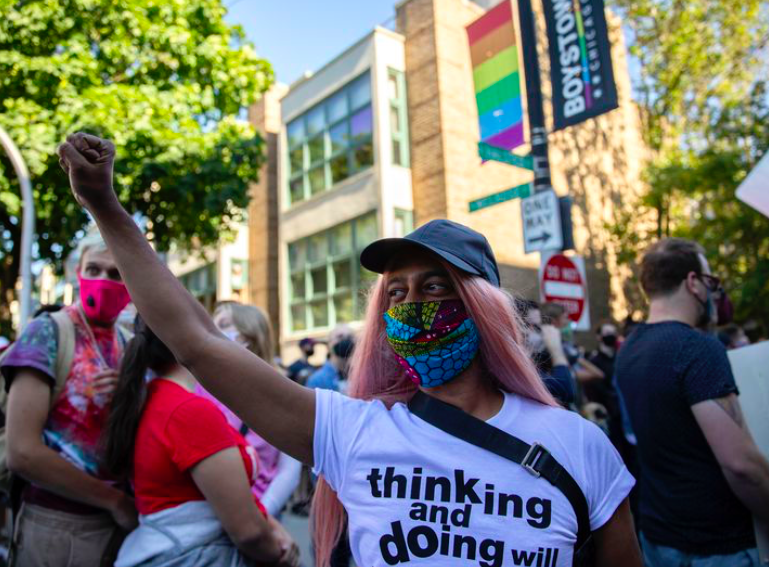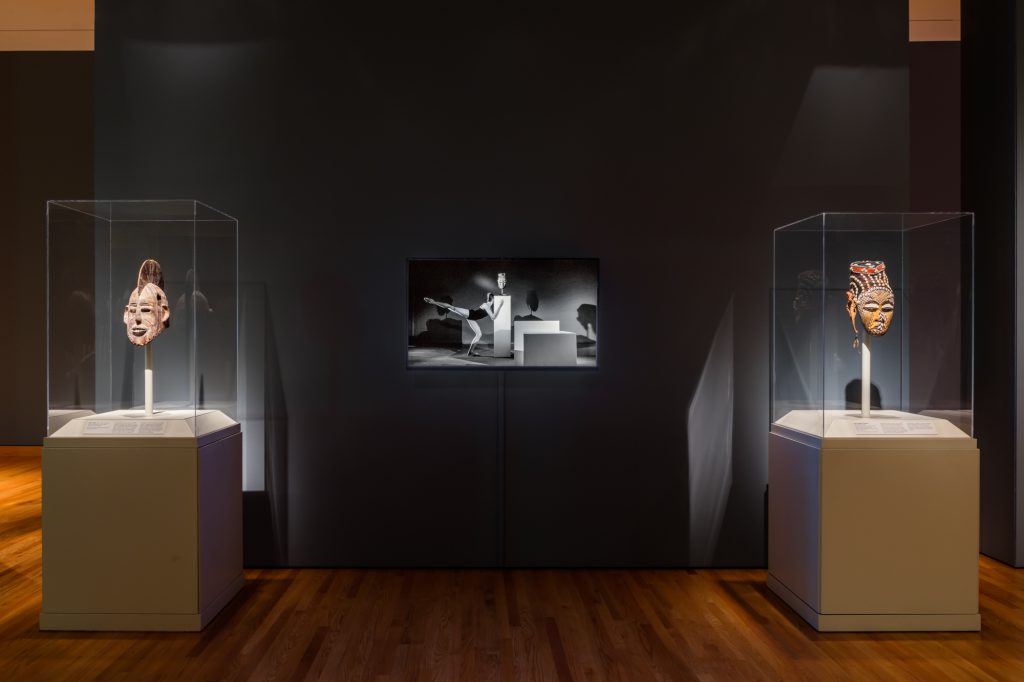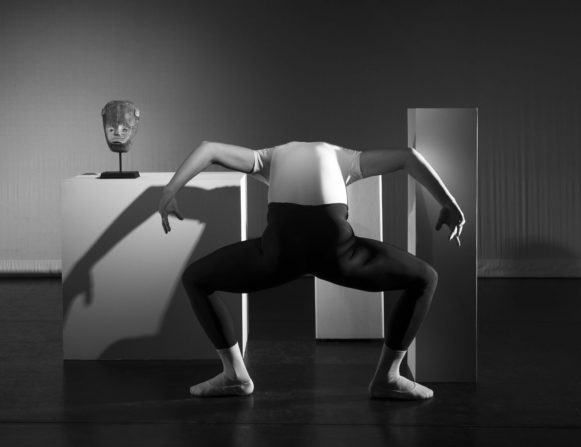Celebrating AANHPI Month: Simon Tran on the Past, Present, and Future of Asian Art Programs at SAM
Happy AANHPI Month! Every May, the United States recognizes the generations of Asian and Pacific Islanders who have enriched and influenced American history with Asian American, Native Hawaiian, and Pacific Islander Heritage (AANHPI) Month. To celebrate, we caught up with Simon Tran, SAM Manager of Public Engagement at the Seattle Asian Art Museum, about his journey to SAM, what he’s working on right now, his goals for the growth of Asian art programming at the museum, and more!
Explore artworks from across Asia and the Pacific Islands by planning a visit to the Seattle Asian Art Museum or Seattle Art Museum. Click here to join our mailing list and stay up to date on future programs at all three SAM locations.
SAM: We would love to hear about your journey to SAM and the work that you do here.
SIMON TRAN: It’s been such an unexpected but thrilling full-circle moment! I began my SAM journey in 2016 as one of the first Emerging Arts Leader interns, immediately after graduating from college. I learned a lot about how art institutions can and should partner with education-based organizations—schools and universities—to develop engaging community-oriented programs. After the conclusion of my internship, I spent four years in Chicago, mostly working in public radio. During that time, I cultivated a deep interest in community-based programming and public engagement. Public radio is similar to art museums: So many diverse communities (can) engage with them, but oftentimes these populations feel excluded from the narrative. Before accepting my current role at SAM, I spent a year in Vietnam teaching English on a Fulbright grant, learning how to plan lessons and engage excited, young learners. I’m always trying to find spaces and opportunities where I can build better community coalitions and increase art access. Museums in particular can feel a bit culturally intimidating to some audiences, and I’m hoping to use public engagement as a vehicle to make museums more inviting and mutually participatory.
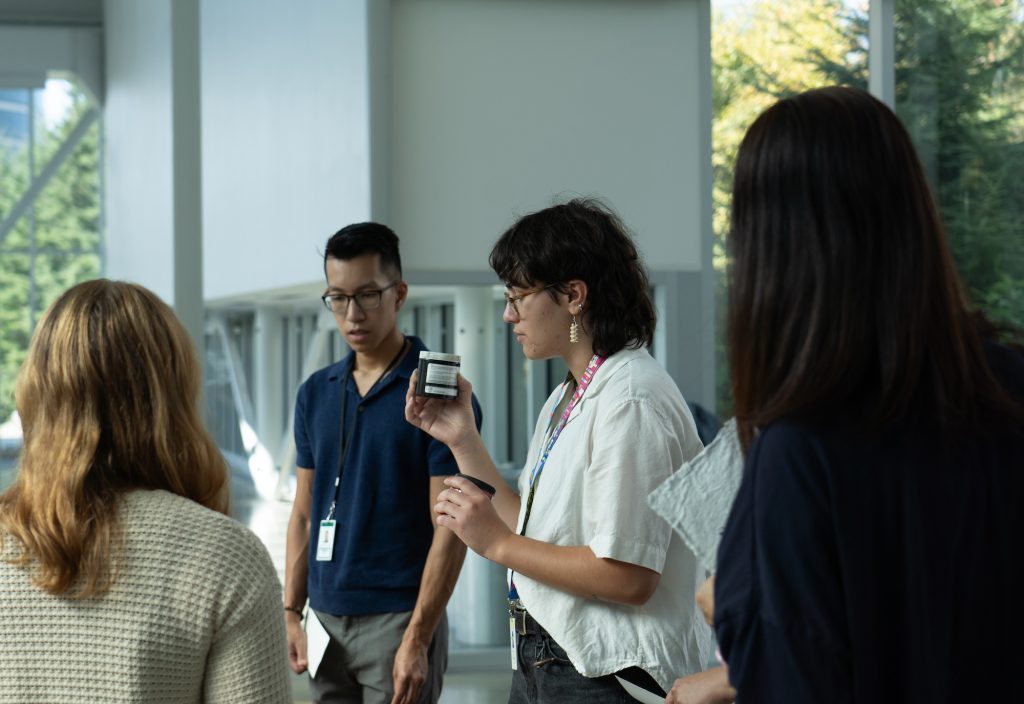
SAM: What are you working on right now that you’re excited about?
TRAN: The Seattle Art Museum is the largest institution I’ve ever worked at, so it’s been interesting to learn about its goals and existing programs. At the Gardner Center for Asian Art and Ideas, there’s been a rich history of lectures on Asian art and scholarship, and that’s something we want to continue. I’m excited to organize the 2024–2025 season of SAM’s Saturday University Lecture Series kicking off this fall, with scholarly perspectives from Latin America, Bhutan, Mongolia, and the Philippines. Asia as a continent is so vast, and there are so many histories, stories, and cultures that we can represent in our academic programming. I’m hoping to increase the visibility of certain voices that aren’t always reflected in this scholarship.
I’m also excited to plan and execute two upcoming editions of SAM Open House at the Asian Art Museum, activating existing and new partnerships cultivated by SAM’s Public Engagement, Education, and Family Programs teams. SAM Open House is a recurring series that invites the whole community to the museum for a free evening of fun and learning after our usual daytime hours. These events will also highlight the exquisite artworks on view in the museum’s upcoming exhibition Meot: Korean Art from the Frank Bayley Collection .
SAM: What are a few of your favorite memories at SAM so far?
TRAN: I’ve only been in this role for nine months, but I’ve already made so many amazing memories. Here are just a few of the highlights:
- In February, I collaborated with Foong Ping, SAM Foster Foundation Curator of Chinese Art, to present “Tides of Times: A Conversation on Maritime Asia in Art and Trade.” This roundtable took place at the Seattle Art Museum and offered visitors an incredible opportunity to witness Ping’s brilliant scholarship and dedication to Asian art.
- In March, I had the privilege of introducing Seattle audiences to the work of Nepalese artist Tsherin Sherpa. He spoke about his extraordinary work of fusing traditional thangka painting with contemporary influences. If you missed the conversation, you can watch it here!
- Later in March, Anida Yoeu Ali transformed into The Buddhist Bug in the galleries of her ongoing solo exhibition Hybrid Skin, Mythical Presence at the Seattle Asian Art Museum. The museum welcomed over 1,000 visitors that day—it also coincided with Ramadan!

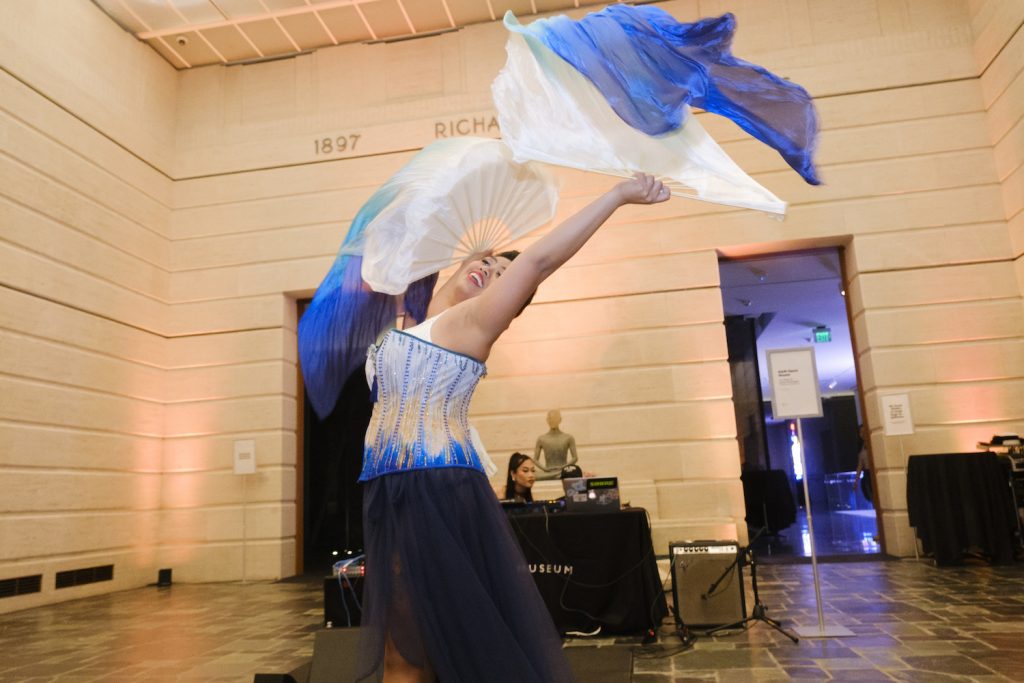
SAM: What short- and long-term goals do you have for programming at the Seattle Asian Art Museum?
TRAN: The Seattle Asian Art Museum is finally starting to feel like more of itself. For years, the museum was closed for remodeling and its grand reopening was cut short after just one month by the COVID-19 pandemic.; I’m still learning the history of the museum and the Gardner Center for Asian Art and Ideas—the legacy programs, past partnerships, challenges, etc. This fall, we’re excited to relaunch the film program, which will center on Asian films from different eras and genres. Film is an accessible medium, and we’re hoping to draw connections between the films and artworks in our galleries! I am also hoping to reinvigorate the community partners around Volunteer Park and Seattle. I know that there are so many organizations doing tremendous work around the city, and we have the responsibility to leverage our resources and bring BIPOC groups and audiences to the museum. Establishing a robust list of organizations that we can consistently communicate and/or partner with is my ultimate goal. The Seattle Asian Art Museum can always better serve and represent the public, and I hope I can help other institutions and organizations to coordinate with one another in a manner that’s more beneficial for us all.
SAM: Why is it essential for spaces such as the Seattle Asian Art Museum, and programming devoted to exploring Asian art and culture, to exist?
TRAN: I think about how most people know a bit about Western art and can name at least a few Western artists, but we’re often not taught much about Asian art. As an Asian American, I was really inspired to know that there are many cultural institutions—including the Seattle Asian Art Museum—in Seattle that have showcased Asian art for decades. Having a space dedicated to Asian art helps demystify what we think of Asian art, and it allows all types of audiences to understand and notice its histories and complexities. Not everyone will have the chance to visit Asia themselves, but I love that the Asian Art Museum is dedicated to making itself accessible for people to grow, to appreciate, and even become inspired by Asian art. Seattle has such a rich history of being a home to Asian people and cultures, and I’m excited to find ways to bridge AANHPI communities to come to the Seattle Asian Art Museum through our varied programming.
I’m really hoping that young people, especially other Asian Americans, feel at home at the Seattle Asian Art Museum, both as a place to draw inspiration and build moments with their fellow community members.
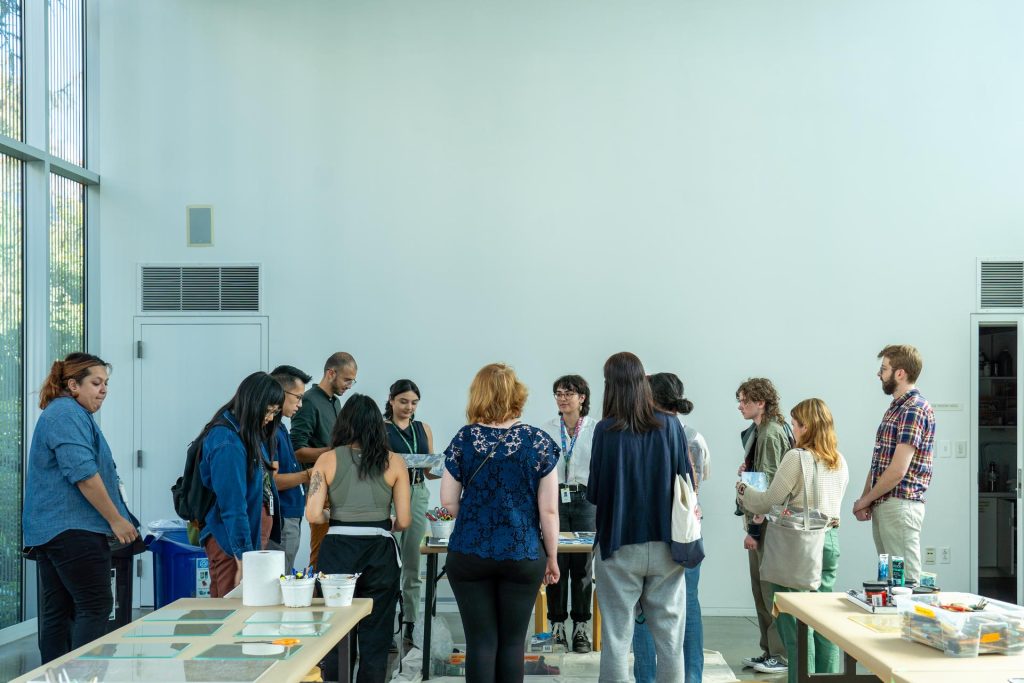
SAM: SAM employs a Manager of Public Engagement at each of its three sites. How do you collaborate with the managers for the Seattle Art Museum and Olympic Sculpture Park to ensure that AANHPI stories are being represented across all three sites?
TRAN: This is the first professional experience I’ve had where the organization operates across multiple sites. It can be easy to just focus on my work at the Seattle Asian Art Museum, but I’ve thoroughly enjoyed and relied on the creativity and strengths that my other colleagues bring.
Jesse Jimenez manages public engagement at the Seattle Art Museum, and they bring a foundational knowledge of art history and working at museums. I marvel at their commitment to long-term impact, pay equity, and improving systems, as well as how they purposely move away from the standard lecture/presentation models in event programming. Heaven Quiban manages public engagement at the Olympic Sculpture Park, and is so passionate and skilled at sustaining robust community partnerships, particularly around underrepresented and grassroots communities. Her ability to foster complex event series that bring together art, healing, and other forms of creative expression is indomitable and contagious.
The three of us talk a lot about improving processes at SAM and how we can better include historically excluded groups in the work that we do. Not only have they both worked at SAM longer than I have, but they’ve also both worked at museums before. Luckily for me, they are generous with their time and expertise. They continuously show up to help at my events, and are happy to connect me with artists and groups I could bring to the Asian Art Museum.
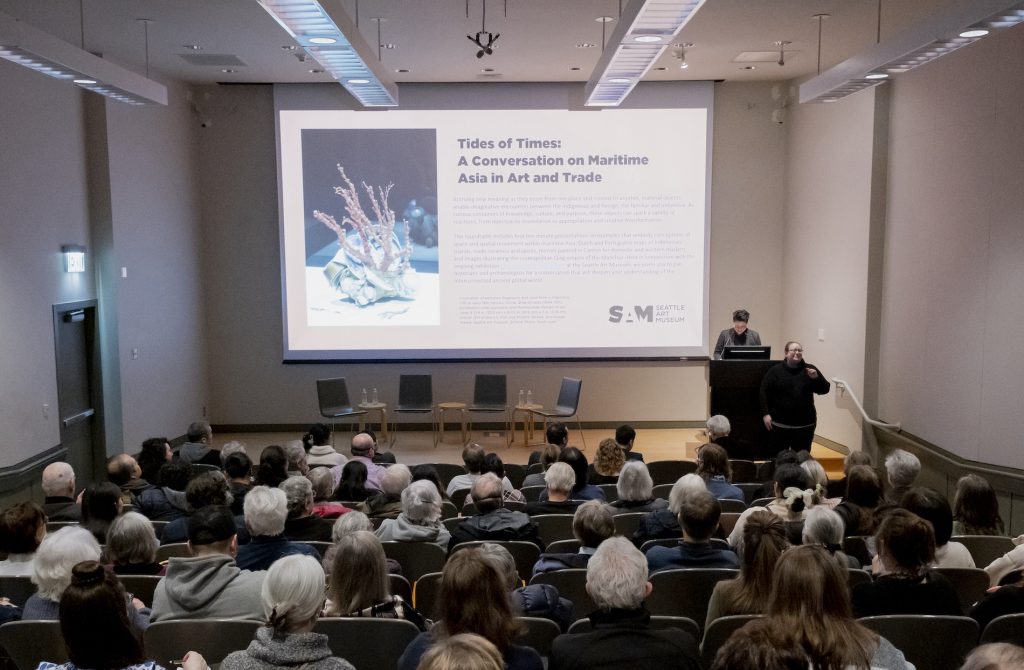
SAM: The Gardner Center for Asian Art and Ideas is celebrating its 15th birthday in 2024. How has the center evolved in that time?
TRAN: The Gardner Center for Asian Art and Ideas has a legacy of shaping how Asian art and culture is reflected and able to engage a broad range of audiences. In the past, the Center has organized yoga classes, performances, and interesting lectures and presentations. I’m hoping to extend that legacy by continuing to create a unique space for audience members to deepen their understanding and appreciation of Asian art and culture. Audiences today can look forward to intersectional cultural performances, creative programs that bring in dance, drag, poetry, and storytelling, as well as a heightened activation of the galleries and programs inspired by the exhibitions. We’re aiming to bring more voices and perspectives within the Asian diaspora to our museum and more visibly centered in the work we do.
SAM: SAM’s collection includes nearly 25,000 works of art. What’s one artwork from the collection on view right now that resonates with you? Why?
TRAN: I am obsessed with the Tomb guardian of Lokapala. It’s serving drama, strength, and killing evil spirits! Its static pose tells a hundred stories.
But on a serious note, this piece of artwork is so rich in detail and folklore. I love how iconography can signify questions about the afterlife, and how central mythical subjects were and are to Asian culture. It’s a mixture of spirituality, mystery, and science—Lokapala is a figure of cardinal directions. There are other Lokapala figures at the Asian Art Museum, ranging from different regions, eras, and made of different materials. There’s no “correct” interpretation of the same figure, and I find myself in awe when admiring each of the artworks.
Celebrate Asian American, Native Hawaiian, and Pacific Islander Heritage Month by supporting one of these AANHPI small businesses and/or attending one of these upcoming events.
mam’s books
The only independent Asian American bookstore in Seattle and the entire Pacific Northwest, mam’s books brings rejuvenating and community-centered programs like book readings, film screenings, community gatherings, dance parties, and so much more.
On Sunday, May 19, mam’s books will host a screening of the documentary short Made in Cambodia. The film follows contemporary artists in Cambodia, where an explosion of creativity, vibrance, and genius is currently taking place. Through the artists’ own voices, we learn about the state of the arts, what inspires them, and what it’s like to be an artist in Cambodia today. The event will begin at 1 pm with an art sale featuring works by the artists in the documentary with the screening beginning at 2 pm. Stick around from 2 to 3:30 pm for a live Q&A with the filmmakers.
Wing Luke Museum
Located in Seattle’s International District and established in 1967, the Wing Luke Museum has a legacy of highlighting local artists and vendors through community-driven programs. The museum is a Smithsonian Institution affiliate and the only pan-Asian Pacific American community-based museum in the United States.
Attend the second annual Spring Market on Saturday, May 25 in the museum’s Community Hall to meet local AANHPI artisans, creatives, and vendors. Local businesses and artists Melted Porcelain, Heliaki Co, and Roldy Aguero Ablao will all be in attendance and visitors can participate in a free lei-making art activity presented by community partner United Territories of Pacific Islanders Alliance Washington.
Amy Tan: The Backyard Bird Chronicles
Amy Tan is the author of several novels including The Joy Luck Club, The Bonesetter’s Daughter, and most recently, The Backyard Bird Chronicles. On Wednesday, May 29, the Seattle Public Library, in partnership with Elliott Bay Book Company, will welcome Tan to the Central Library as she shares stories and images from her latest book.
The Backyard Bird Chronicles maps the passage of time through daily entries, thoughtful questions, and gorgeous original sketches. With boundless charm and wit, Tan charts her foray into birding and the natural wonders of the world. is a gorgeous, witty account of birding, nature, and the beauty around us that hides in plain sight.
– Lily Hansen, SAM Marketing Content Creator
Photos: Alborz Kamalizad & Chloe Collyer.
